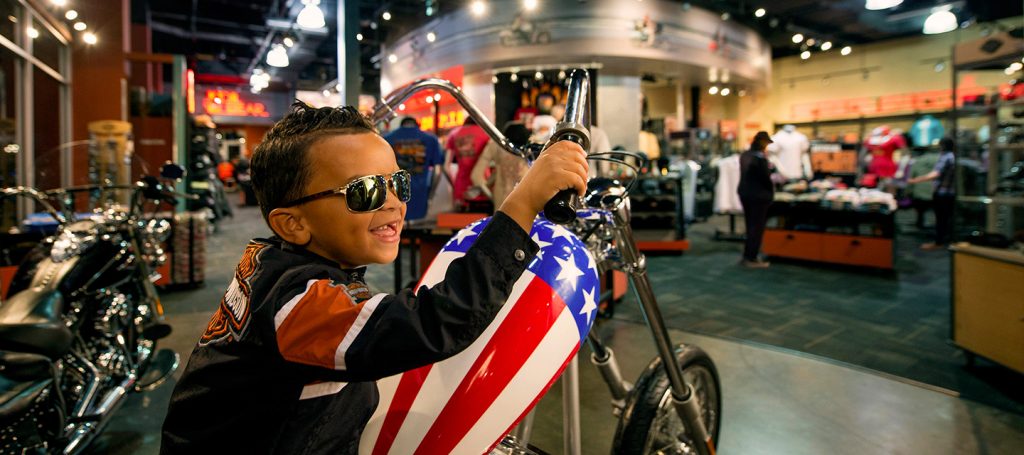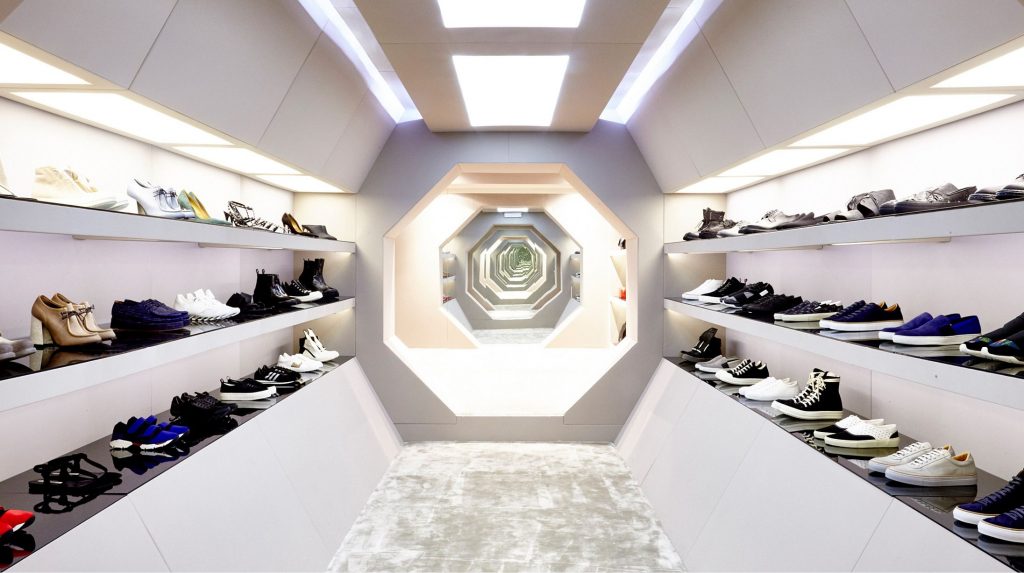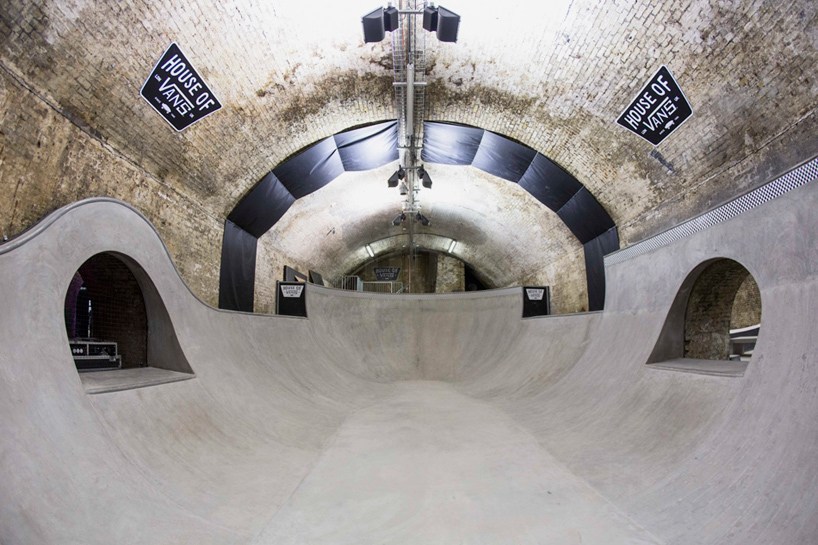
Manage FF&E specification, procurement, and product data at scale. Take on bigger projects with confidence and grow your firm with Fohlio. Schedule a demo or book a consultation with one of our account managers to explore these features today.
(Welcome to Part 3 of our three-part series on the psychology of great retail interior design. Today’s post focuses on retail experience design. Sign up for blog updates to get the next articles right in your inbox!)
Whether or not you’ve ever worked in the retail industry, there’s a good chance you’re familiar with the maxim, “The customer is always right.”
Well, the times have changed, and so have the buzzwords, but the sentiment is the same: We put the customer at the center of everything we do,” or “We are moving the customer to the center of the enterprise,” or “Customer-centricity is critical to the success of our operation.”
Clearly, this concept is nothing new, so it may be a surprise to find out that so many brands are still getting it wrong.
What Brands Are Getting Wrong About Retail Experience Design
You have may recently been to one of your regular retail haunts. But along with the seasonal display change, you noticed something else: Headsets. Tablets. A haze of blinking lights where there were none before.
Oh, I get it, you think to yourself. They’re getting with the times and being “high-tech.”
Sadly, finding items you need is no easier and lines at the checkout counters are moving no faster.
According to retail columnist Doug Stephens, there is “a fundamental misconception about what customer experience really is and, more importantly, how truly remarkable customer experiences are conceived.”
Stephens explains, “Most retailers assume customer experience is primarily an aesthetic concept and more about how stores and websites look and feel.”
And other retailers? They simply “assume that customer experience simply means better, friendlier or more personalized service.”
Unfortunately, it’s much more complicated than that.
Read: Tiffany & Co. Mastering Experiential Retail Design: Navigating Trends, Trials, and Triumphs
Retail Experience Design is All About “Engineered Moments”
In their book “The Power of Moments,” Chip and Dan Heath explain the reality of human experience. For the most part, our engagement with brands, corporate culture, and other people is a fairly “flat” experience — except when it isn’t.
To put it differently, everything is just background noise until we experience “peaks” or “pits” — and those are the things we remember.
So how do you stand out? Let’s take the Magic Castle Hotel in California, as an example. By most measures, it’s an average hotel — except that they have a popsicle hotline phone by the pool and a guy in white gloves who delivers your favorite flavor whenever you call! The pool is majestic, but no one remembers it, and everyone tells anyone who’ll listen about the popsicle phone.

Read: “Home Away From Home” is the Hottest Hotel Design Theme Right Now
“Designing great experiences is a blind spot for many corporate leaders,” says design innovation consultant Kingshuk Das. “It’s an area of expertise that needs just as much attention, rigor, and patience as the other aspects of business excellence taught in our B-schools.”
In other words, designing the retail experience means breaking down the entire customer journey into the smallest possible components, and then “reengineering each component to look, feel and, most importantly, operate differently than before,” according to Stephens.
“Truly remarkable customer experience is no different than stage production where cast, crew, set design and tech come together to bring every line, scene, and act to life, where every aspect of the well-written brand script is meticulously directed, rehearsed and performed.”
Read: Tangible Shopping: Exploring Trends in Brick-and-Mortar Resurgence
5 Principles of Great Retail Experience Design
Creating the best possible retail experience means going beyond design and looking to sociology, economics, organizational behavior, and yes, even theater.
Here are 5 ways to get it right:
Don’t box in good retail experience with luxury. White-glove service and calling customers by their first name are a narrow slice of the retail experience pie. Consider Southwest Airlines, says Das. “At its best, the combination of heart, humor, and efficiency makes for a distinctly Southwest script for air travel that’s different from the norm.”
Engage and empathize with your customer. Take advantage of how social media is changing the way brands communicate with their customers, and making it easier to create emotional relationships. Walk in your customers’ shoes. The reason Harley-Davidson elicits so much loyalty from their customers is because even their employees are the kind of people who regularly hit the open roads, and equate biking with life and freedom.

Tell authentic brand stories, and make them immersive. Find out where your brand is able to make authentic connections to your customers and nurture it — forget about what your competitors are doing and stay true to yourself. Target used to be a discount retailer trying to outdo Walmart on prices, until it realized it could create a destination for the design-minded but value-conscious community. Ikea has held sleepovers in some of its shops, bringing to life a dream for many of its loyal customers.

Make it personal. There are two ways to go about this. One is by showcasing products by local artisans. The fact that these will probably be small-batch and limited-edition makes the products seem more valuable, especially against the backdrop of generic, disposable, and mass-market items.
The other way of doing it is perfectly exemplified by Farfetch, who successfully combined their in-store and online experiences. In one of their temporary physical stores, they have screens and smart mirrors that allow shoppers to log into their personal accounts. It provides customer insight for the sales assistants, and allows them to ask for different sizes or products, and even pay for them without ever leaving the room. Best of all, it collects data that can further enhance future interactions.
Read about how this smart mirror is changing the retail game.
Make the experience entertaining and educational. Let’s look at the Ikea example again: Not only was it a fun affair, it also provided an opportunity for customers to learn about and experience the products for themselves. Of course, it also provided plenty of Instagram-worthy moments.
Late Night Chameleon Cafe in London is an appointment-only store. Here, customers can not only purchase eco-friendly products from “mainline designers,” they can also access small-batch creations from new, independent talent that uphold their ethos of expression, integrity, and honesty.
There’s also a collection of first edition and out-of-print books, plus a bar and club space that serves, you guessed it: all-natural drinks. The brick and mortar store has turned itself into a store within an art installation, instead of the more-usual other way around.

What’s in The Cards for Retail Experience Design? Augmented Shopping
Augmented shopping here means two things: the seamless integration of online and brick and mortae shopping, and “one journey retail.”
The 2018 Consumer Trends Report confirms what the Farfetch example has already proven: that there is huge value in bridging the gap between the online and brick and mortar store retail experience. “Buy Online, Pickup In-Store” (BOPIS) is now considered a mainstream offering.
It also suggests that the tactile experience offered by bricks and mortar are increasingly important to customers, and consequently a highly valuable component of a brand’s value — proof, again, that retail stores are not dead, but evolving.
Read: Is It Death for Brick-and-Mortar Stores?
Another bonus to this is the finding that shoppers’ willingness to engage with store associates for assistance has increased 19% from the previous year. “More than two-thirds of respondents said they expected those associates to have access to their order histories, suggesting expectations are high for knowledgeable interactions that draw on shoppers’ past interactions across touchpoints.”
It’s not a matter of machines replacing humans in the customer’s retail journey, but rather a bridging of the gap and the improvement of their interaction.
Read: Tiffany & Co. On Mastering Experiential Retail Design
Howard Sullivan, co-founder of YourStudio, an agency that designs retail stores, has this to say about the future of retail experience: “Retail and hospitality have become much closer in recent years. This move is in both directions with hotels like the Ace Hotel mixing DJ-ing, live events, workspace, shopping and art events within their hotel lobbies so they become active social hubs, always buzzing with energy.”
He adds, “If you look at retailers like Goodhood in London, they are mixing everything ‘lifestyle’ under one roof, always stimulated with events, publications and content that is really nourishing.
“We call it ‘one journey retail’ but it’s the idea that ‘retail’ or ‘shopping’ doesn’t need a distinct category, or time carved out for it in isolation but more needs to be seen as something we thread into our day-to-day. Whether it’s purchasing spontaneously from an influence we’ve had on Instagram or wanting to stop for a coffee while we’re out.
“All should be and could be offered by retailers whose brand essence aligns with our own lifestyle.”

Design and build better with Fohlio. Sign up for your free trial, or schedule a free demo.
Manage FF&E specification, procurement, and product data at scale. Take on bigger projects with confidence and grow your firm with Fohlio. Schedule a demo or book a consultation with one of our account managers to explore these features today.
Sources/further reading:
Retail TouchPoints
Retail Prophet
Shopify
In-Between
Fast Company
Storefront
Forbes
The Marketing Journal
Indesign
Expore Fohlio
Learn how to:
- Save days of work with faster specification
- Create firm-wide design standards
- Automate and centralize procurement
- Keep your whole team on the same Page
- Manage product data
- Track budget against cost in real time.
- Prepare for asset valuation
Published Feb 20, 2019

